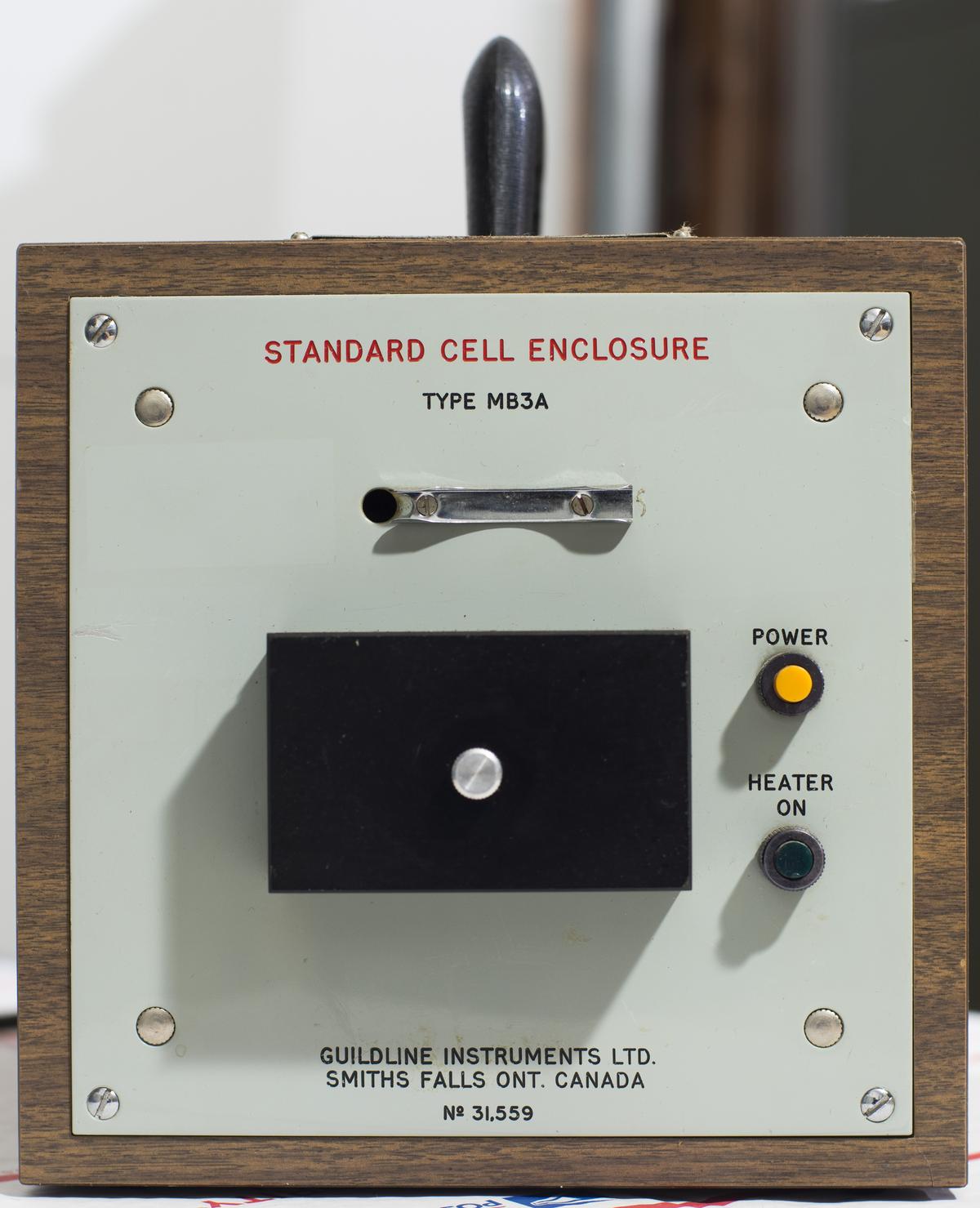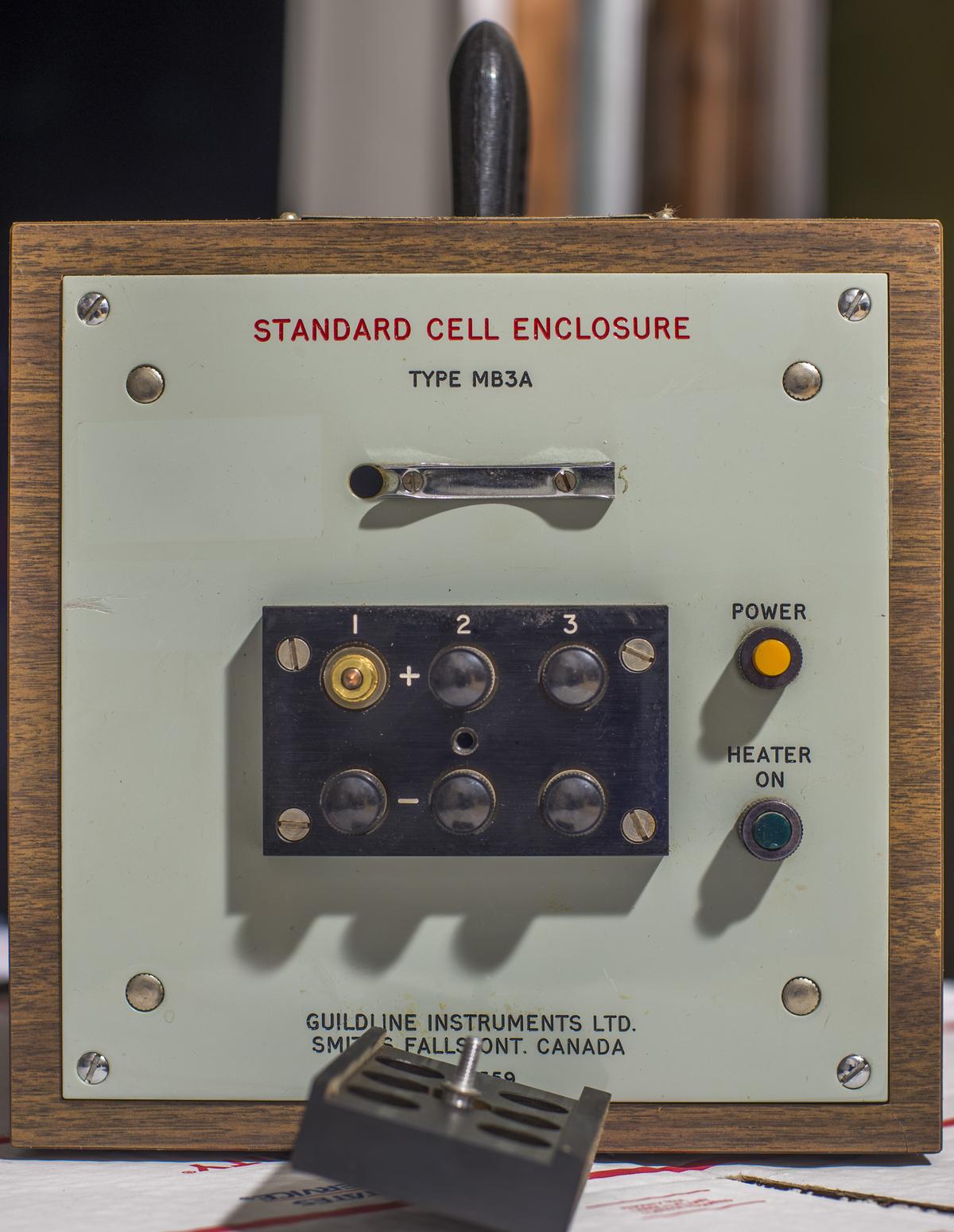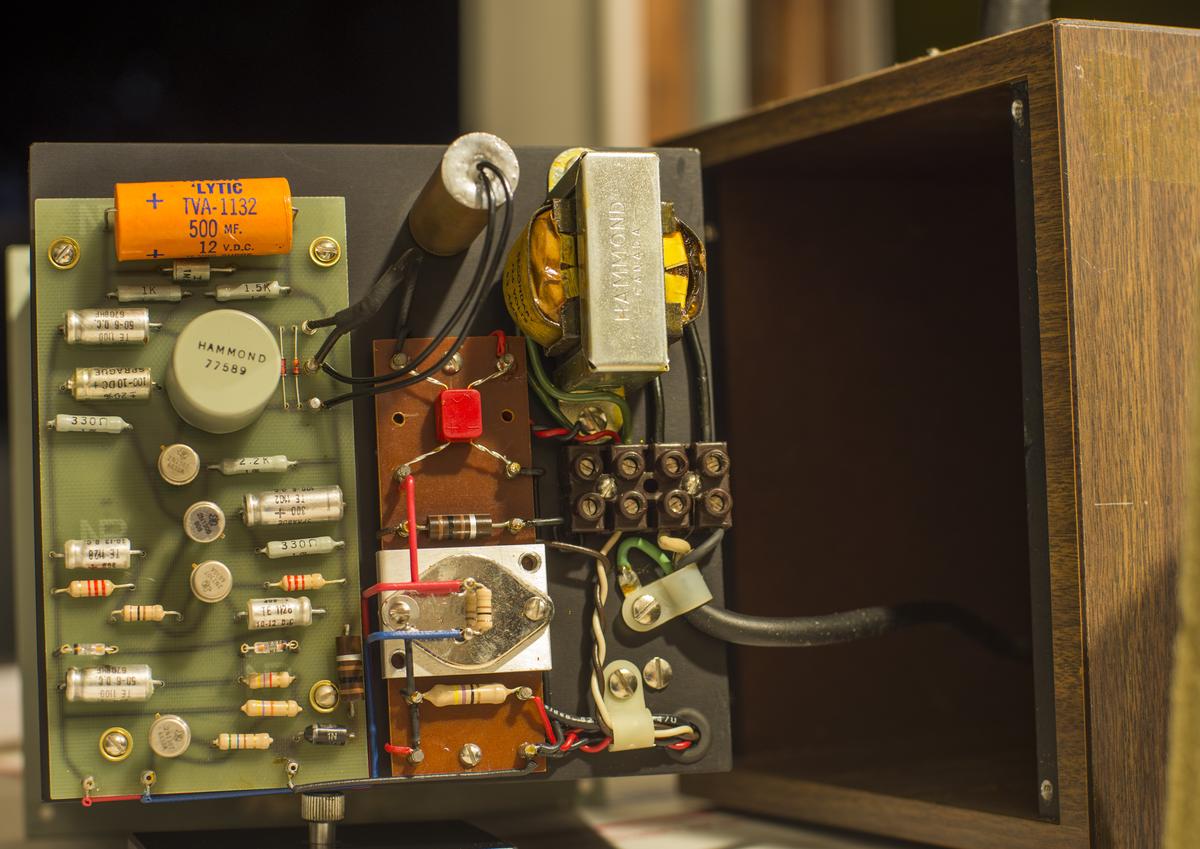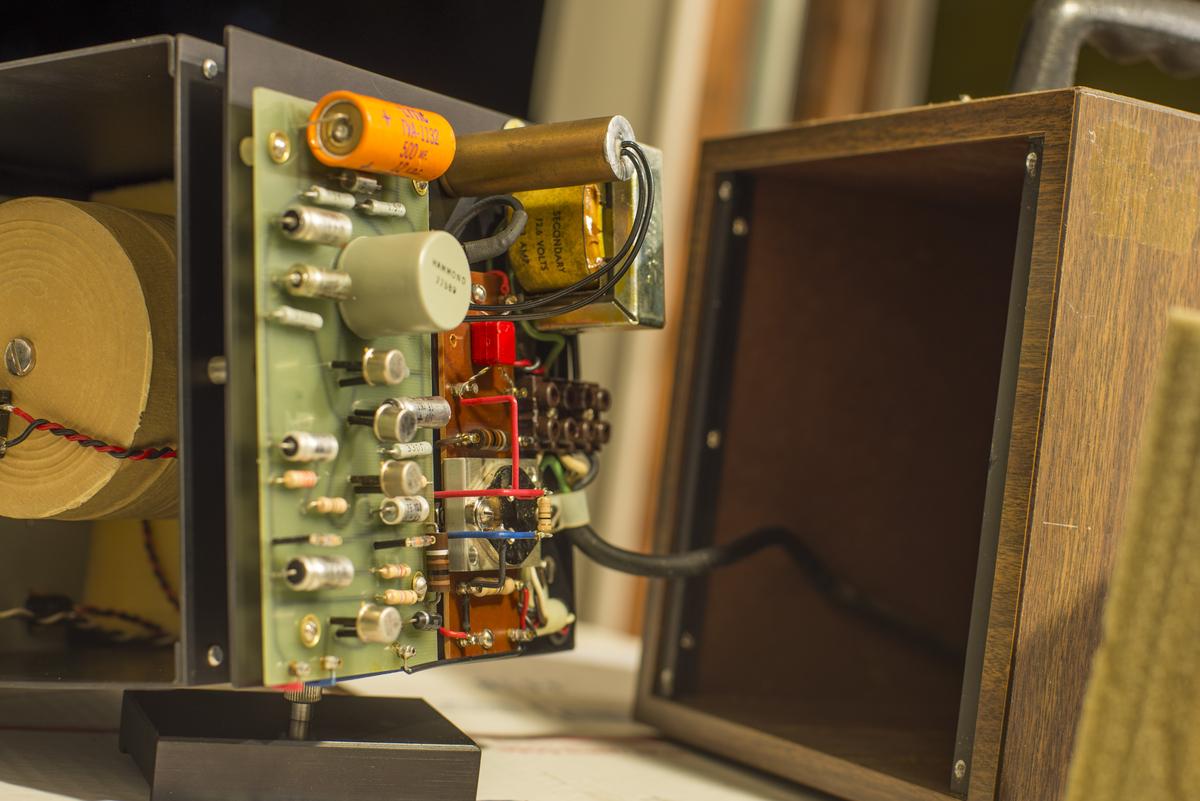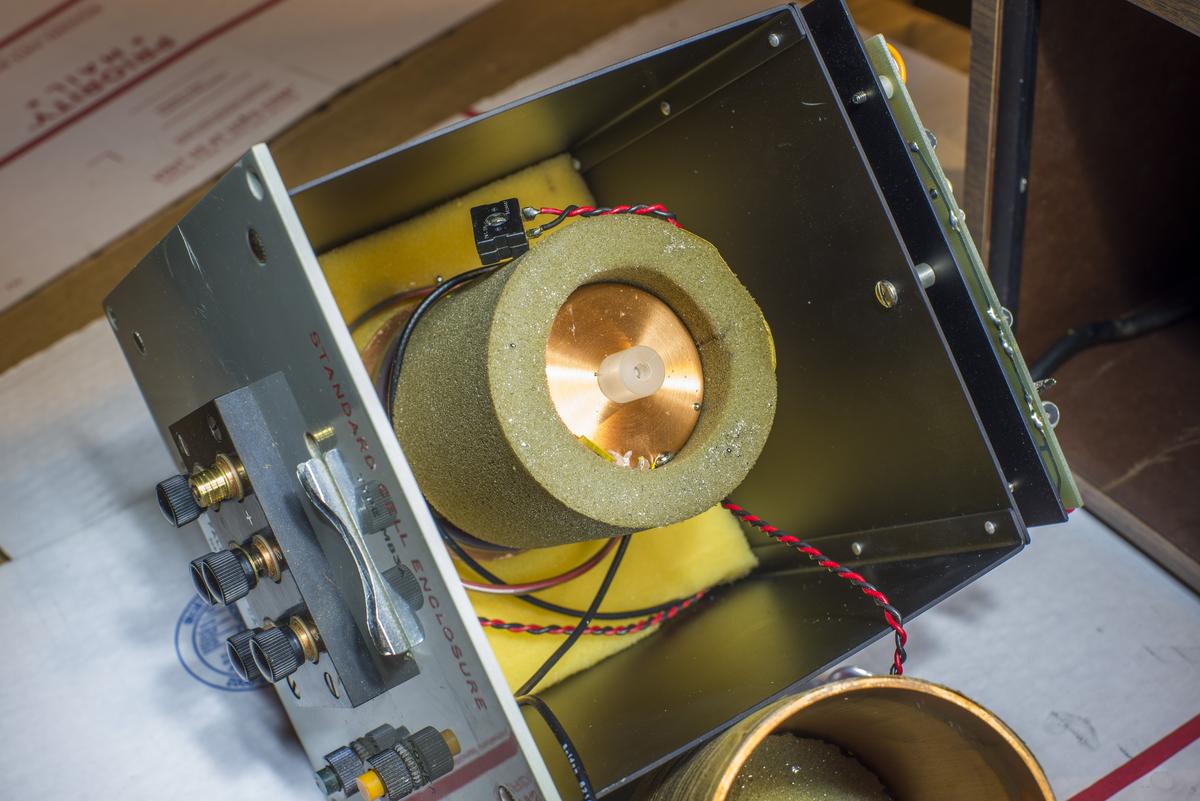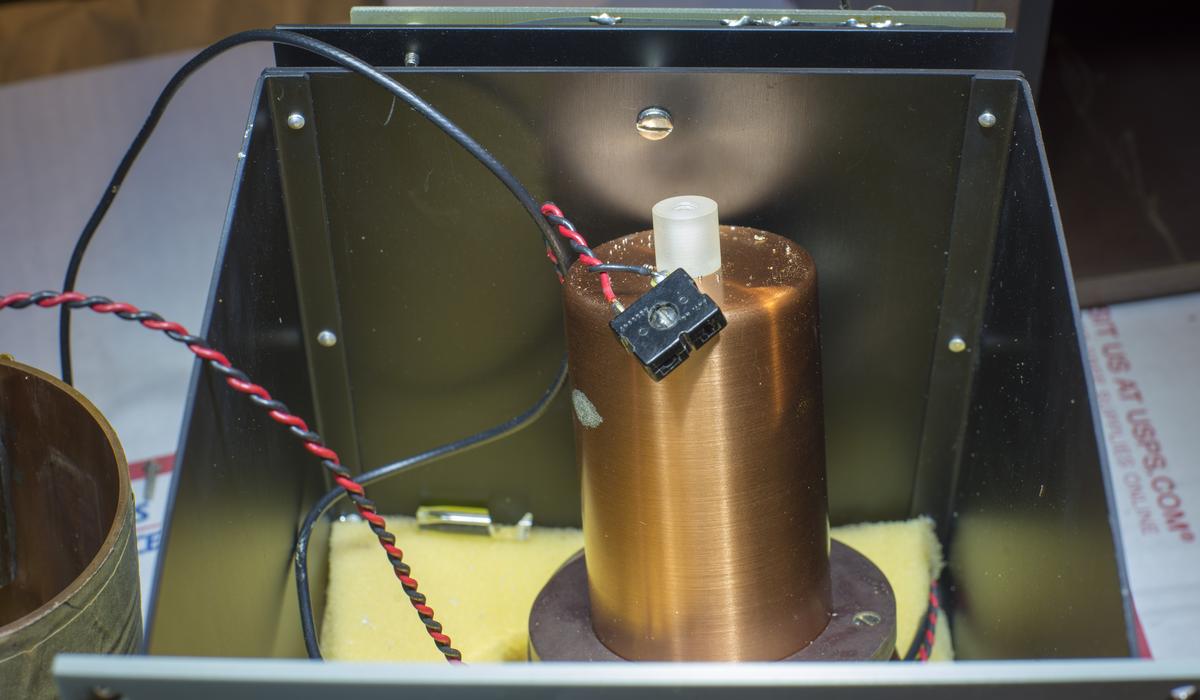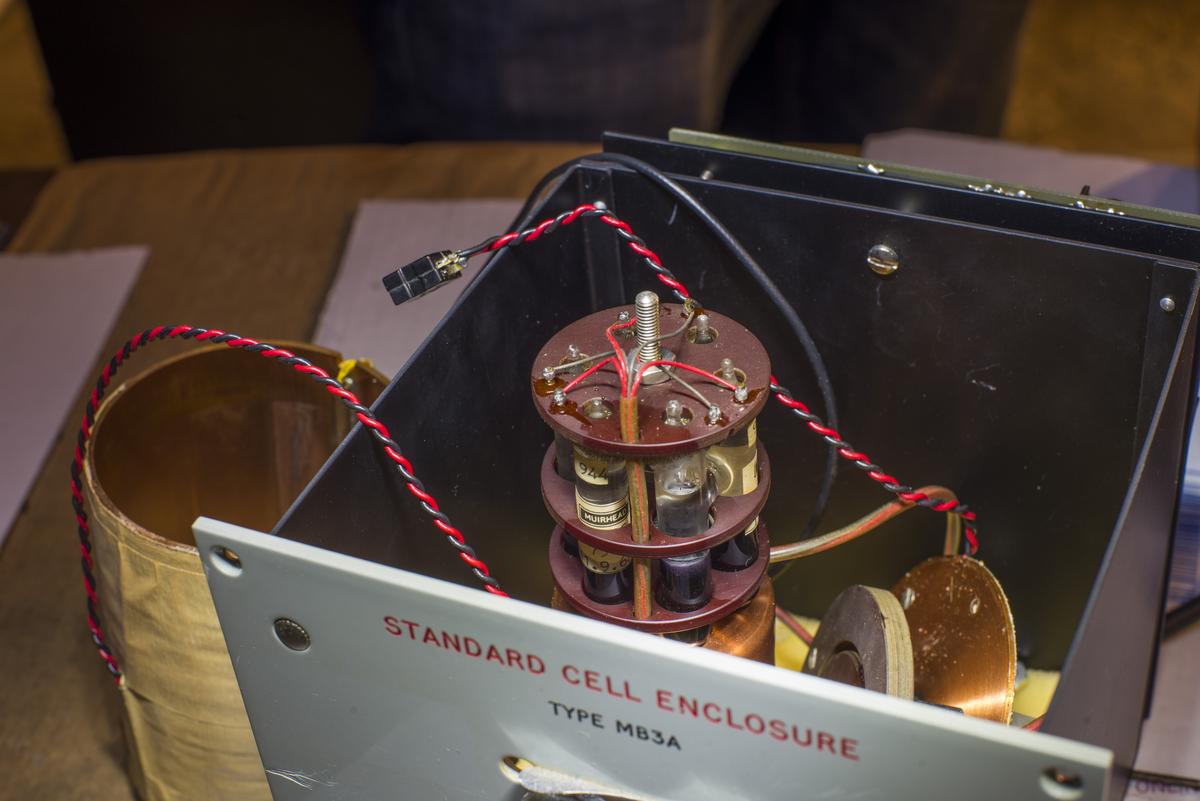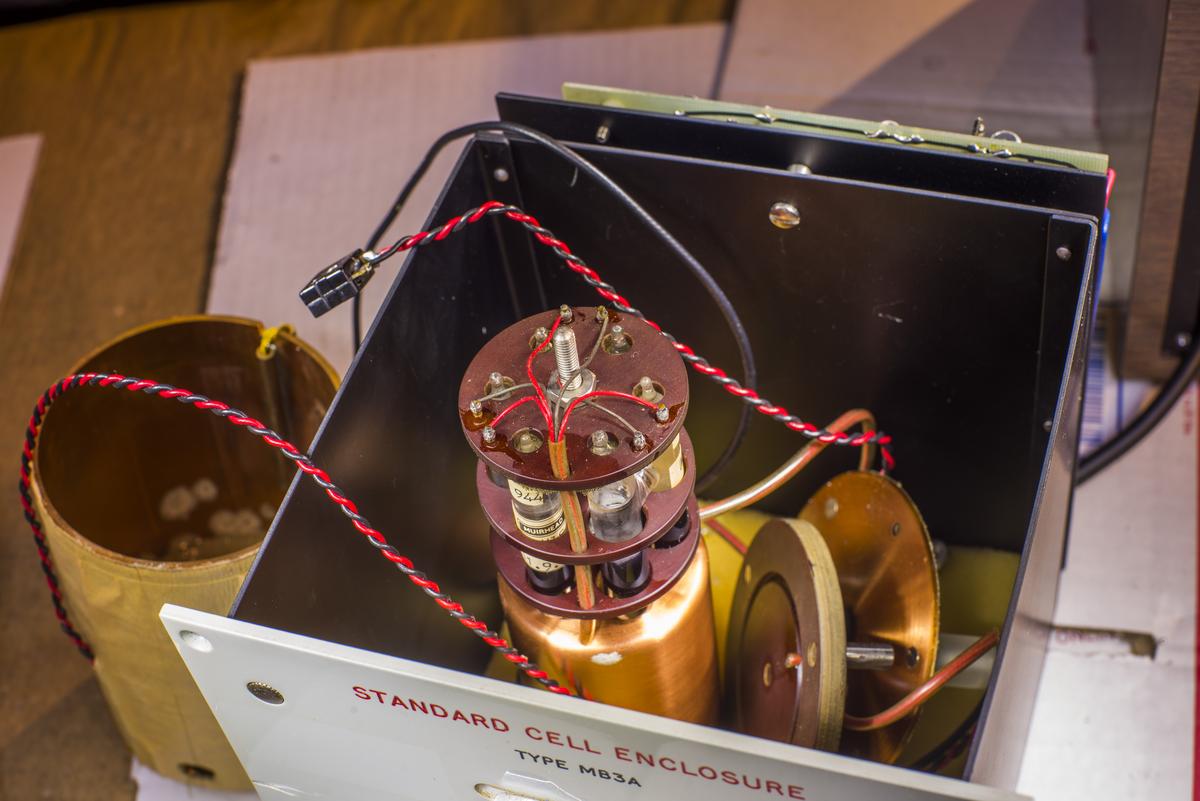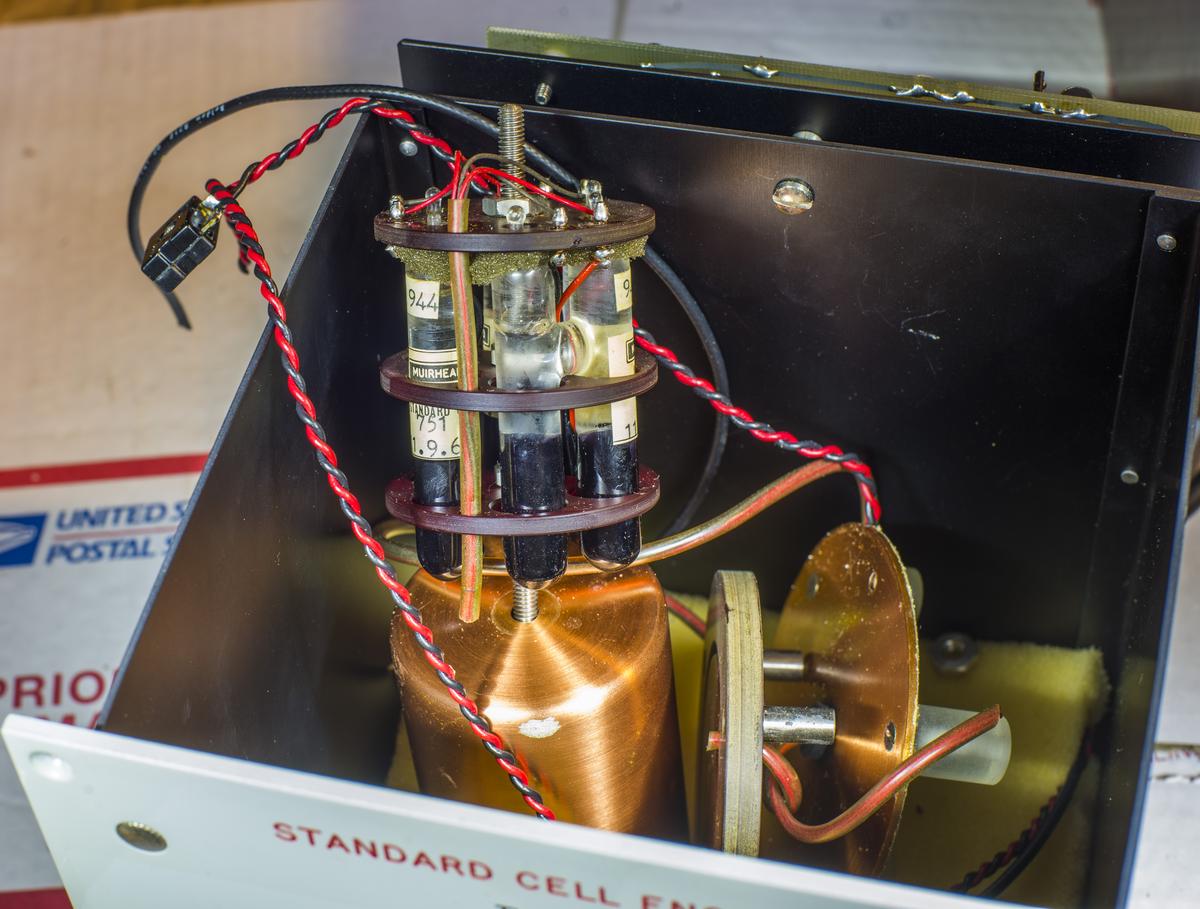Intro
Edward Weston got a patent in 1891 for his improved voltage standard based on chemical cell design. What later become known as Weston cell is electrochemical device purposed to generate stable voltage EMF when kept in stable conditions. The Weston Standard Cell is usually H shaped hermetically sealed glass vial with two output electrodes. There is a platinum wire on the bottom of each cell used as the electrode. It is coil shaped to prevent damage caused by movements. One cell contains mercury covert with mercury sulfate as the positive electrode. The negative tube contains cadmium mercury amalgam. Above this, a saturated cell has a layer of cadmium sulfate crystal. Non saturated cells have a top-layer of cadmium sulfate. This makes it possible to transport them and use other shapes. The downside is a short lifespan of non-saturated cells.
One important thing for these chemical cells is the large temperature dependence. This means to make them practical as standards temperature must be stabilized to fixed value with great care. And that is why most of the commercial Weston-based standards are enclosed in the multi-layer oven. Transporting such standards also very tricky. After some movements the cells need weeks to stabilize. Cells do not tolerate tilts and orientation changes or vibration is that damages the cells.
Cells need to be handled with utmost care and cannot be measured directly by usual voltmeter. This is due to excessive drain of the current, causing damage in the cell. Calibration with cells are done with floated null detector versus another electronic voltage standard.
Today high-end metrology grade voltmeter instruments are >10 GΩ and that is much safer way to measure Weston cell today. But there is no practical use now due to availability of modern advanced zener ICs such as LM399, LTZ1000 and latest addition ADR1000 for commercial labs and quantum voltage standards around Josephson effect for national level metrology.
Muirhead model D-698A Weston cell datasheet from 1956
Also very good historical read is NBS (today NIST) document about these type cells.
Look outside for Guildline MB3A:
Standard we look at today is triple voltage output saturated cell, Guildline MB3A, manufactured in 1968. It has low thermal copper output terminals for each cell, power supply entry for oven operation and indicator lamp.
Terminals are covered by bakelite plate to reduce risk of unwanted thermal EMFs. Voltage output of good saturated cell should be around 1.018638 VDC.
Guildline MB3A teardown
This standard was received with physically destroyed mercury thermometer vial, which contained quite a bit of mercury.
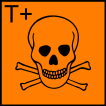

Mercury is classified with a health or environmental hazard. Mercury is toxic to the central and peripheral nervous systems. The inhalation of mercury vapour can produce harmful effects on the nervous, digestive and immune systems, lungs and kidneys, and may be fatal. The inorganic salts of mercury are corrosive to the skin, eyes and gastrointestinal tract, and may induce kidney toxicity if ingested.
This means that meeting all safety precautions in well ventilated area during all handling and disassembly of this device with further disposal as hazardous material article. Enjoy rare photos of internal construction.
Those shiny silver beads is not a sloppy soldering job but actual liquid mercury bouncing around after thermometer damage.
Each cell is Muirhead standard 751, with manufacture dates around 11.9.1968
Projects like this are born from passion and a desire to share how things work. Education is the foundation of a healthy society - especially important in today's volatile world. xDevs began as a personal project notepad in Kherson, Ukraine back in 2008 and has grown with support of passionate readers just like you. There are no (and never will be) any ads, sponsors or shareholders behind xDevs.com, just a commitment to inspire and help learning. If you are in a position to help others like us, please consider supporting xDevs.com’s home-country Ukraine in its defense of freedom to speak, freedom to live in peace and freedom to choose their way. You can use official site to support Ukraine – United24 or Help99. Every cent counts.
Modified: Dec. 30, 2022, 4:59 p.m.

